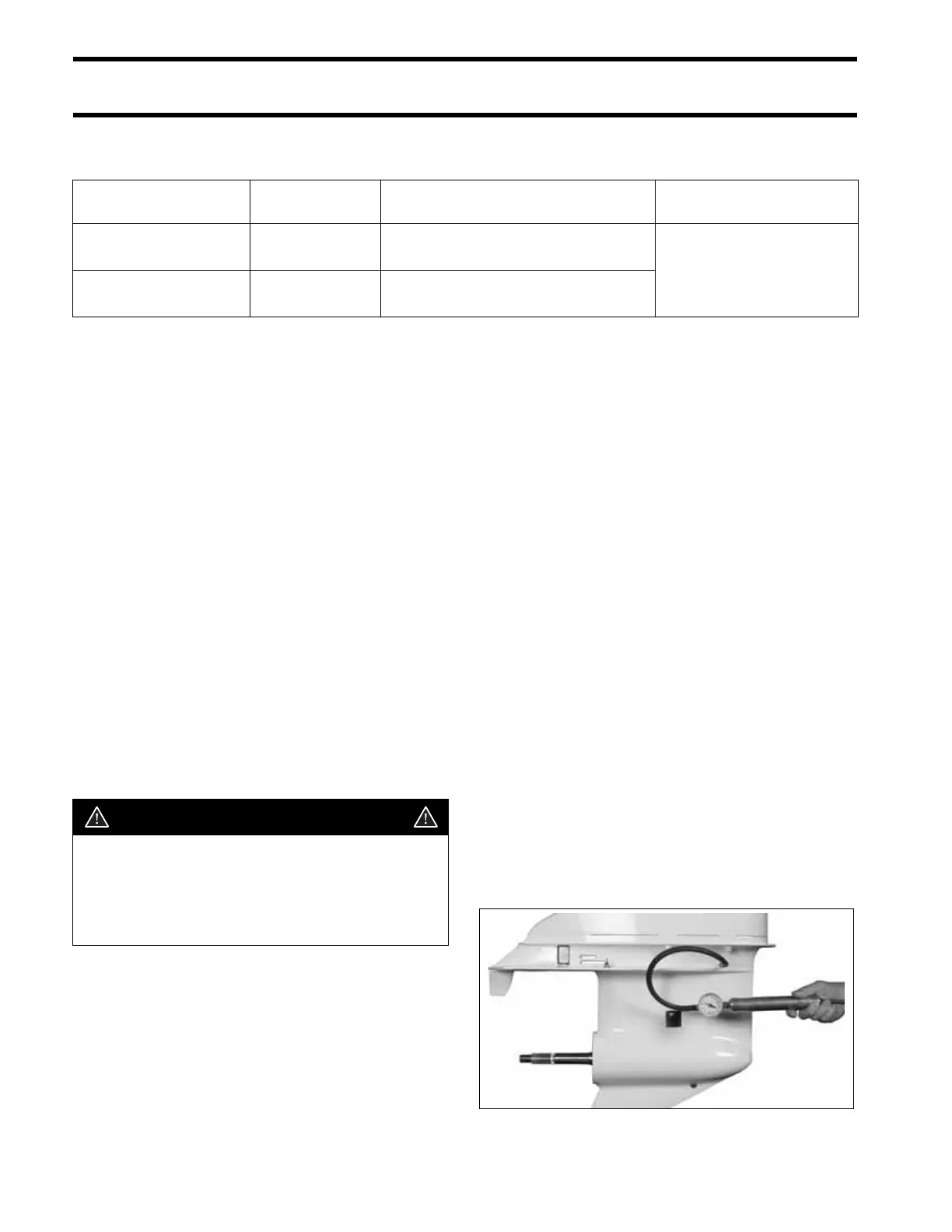260
GEARCASE
GEARCASE TYPES
GEARCASE TYPES
PROPELLER SERVICE
Inspection
Carefully examine propeller and outboard for the
following:
• Damaged blades and signs of propeller cavita-
tion (burned paint, etc.)
• Spun or overheated inner hub
• Worn or twisted splines and inadequate lubri-
cant
• Damaged or missing converging ring (if applica-
ble)
• Damage to outer hub area
• Worn, missing, or incorrect thrust washer and
spacer
• Correct size and style
• Check for bent or damaged propeller shaft and
twisted splines.
Refer to Propeller Hardware Installation on
p. 59.
GEARCASE LEAK TEST
Drain lubricant before testing.
Install lubricant drain/fill plug and seal, thread
pressure test gauge fitting and seal in lubricant
level hole.
Pressurize 3 to 6 psi (21 to 42 kPa).
If pressure gauge indicates leakage, submerge
the gearcase in water to determine source of leak.
If the gearcase pressure gauge does not indicate
leakage, increase pressure to 16 to 18 psi (110 to
124 kPa). Check for leakage.
Make necessary repairs and repeat test.
Install vacuum test gauge. Apply 3 to 5 in. of vac-
uum (76 to 127 mm) Hg. with pump.
Check for leakage.
If leakage occurs, apply oil around suspected
seal. If leak then stops or oil is drawn in, that seal
is defective.
Repeat test, gearcase must hold minimum of 15
in. (381 mm) Hg.
Outboard Model
Gearcase
Type
General
Comparison
Service Procedure
Comparison
(L) Models with
20 in. shaft
“S”
Unique housing, shafts,
gears, and bearings
Similar
(X) Models with
25 in. shaft
“O”
Unique housing, shafts,
gears, and bearings
WARNING
When servicing the propeller, always shift
the outboard to NEUTRAL, turn the key
switch OFF, and disconnect the battery
positive (+) cable so the outboard cannot
be started accidentally.
002388
